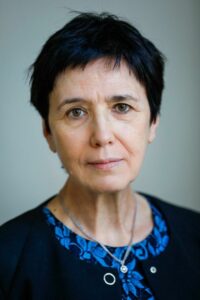
The Basic Science Committee was established a few years ago as a new committee within the ECTS structure, next to committees addressing Clinical Science, Education, Communication, Research grants & awards and the Academy. The Basic Science committee aims to address specific questions of scientists focussing on basic and translational research related to musculoskeletal topics.
The committee consists of six members, each bringing in a different expertise ranging from skeletal imaging and bone quality analysis to glucocorticoids, osteo-immunology, osteoarthritis, bone and cancer, osteoclasts, hypoxia signalling, and skeletal cell metabolism. Besides trying to have a good balance between the different scientific domains within the musculoskeletal field, we also attempt to have a good representation of junior/senior scientists, geographical regions and gender.
During the last years, because of COVID-19, the members could not meet in person, but had regular online meetings to discuss the progress of outstanding issues. One of the topics we discussed was related to the format and content of abstracts submitted by basic scientists to the ECTS annual meeting and their evaluation by the panel of reviewers. We suggested that the abstract should be organized in such a way that background, aim, methods, result and conclusion are clearly discernible. However, these items can be displayed in one continuous text instead of being separated in different text boxes. Especially for the method section of basic and translational studies, it is easier and more logical to describe them together with the results. Indeed, many translational studies using mouse models rely on a combination of different in vivo and in vitro methodologies to describe the phenotype and analyse the underlying cellular and molecular mechanisms. The reader will understand the reasoning and different steps of the study more easily when methods and results are described together than each separately.
The second suggested change concerned the difficulty of presenting hard data, when an innovative method is being developed and described. Many advances in basic and translational research rely on the development of novel techniques and methodology, allowing to analyse parameters that were not possible before. Several young PhD and postdoc researchers spent often months or even years in order to establish and validate these technologies, which will then become very valuable for the entire research community. One of the requirements for an abstract to be selected for oral presentation at the annual ECTS meeting is that hard data are included. However, technological developments cannot present hard data at this stage of development, although the obtained information may be important for many other researchers. It was therefore decided that abstracts reporting ‘innovative methods’ form an exception to this ‘hard data criterion’ and can be selected for oral presentation without showing hard data, when the science is of excellent quality.
Several other initiatives are in progress and include, for instance, developing strategies to attract basic scientists to the ECTS meeting or writing commentaries on technologies used in musculoskeletal research, which are however rather difficult to understand for biomedical researchers as they are largely based on engineering principles.
I want to thank all the members of the Basic Science committee for their numerous suggestions, active contribution, open discussion, enthusiasm for basic science and commitment to musculoskeletal research.
